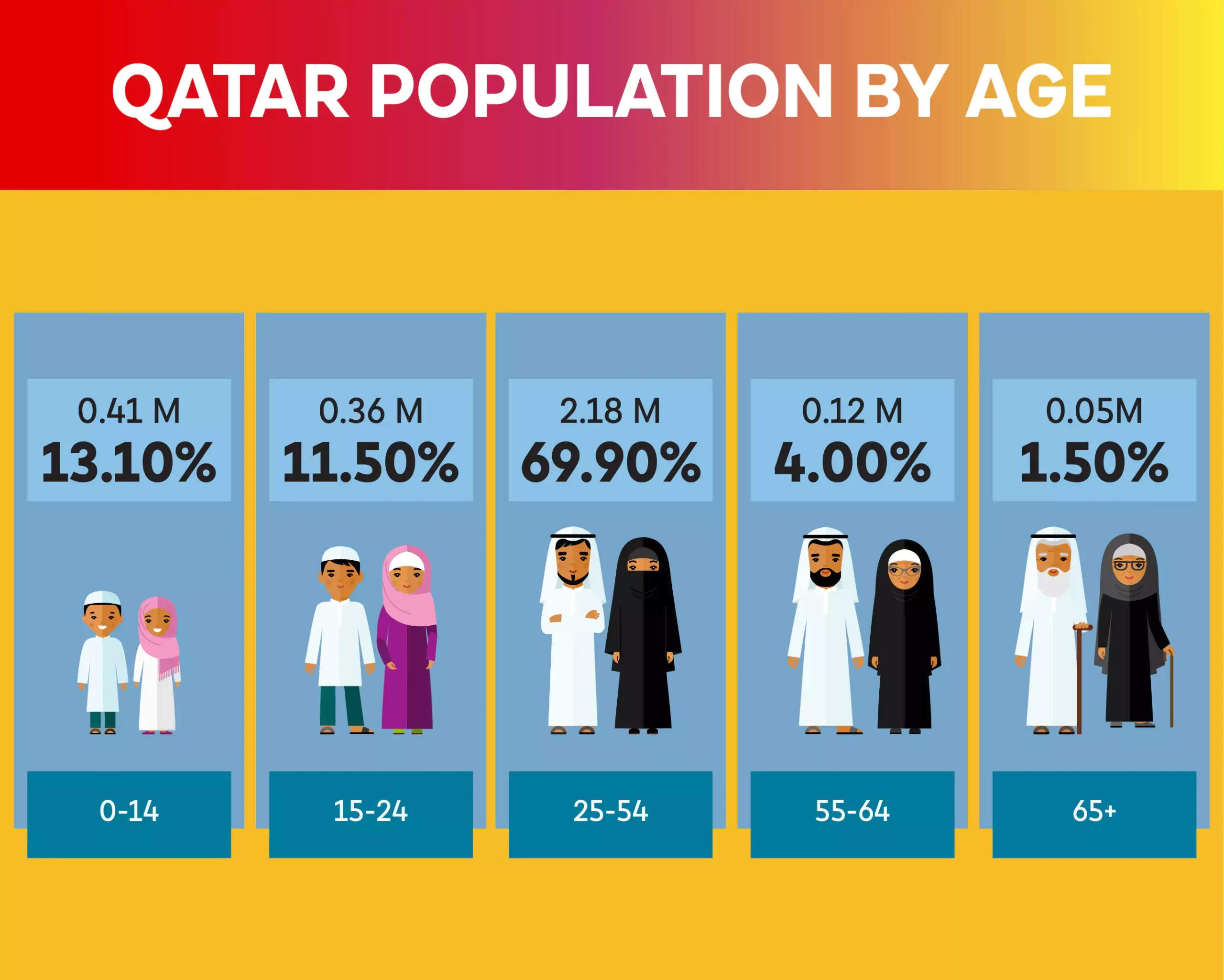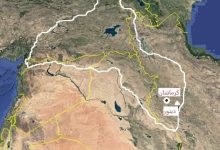Introduction
The tiny but strategically vital nation of Qatar, situated on the northeastern coast of the Arabian Peninsula, has attracted global attention not only for its substantial natural resource wealth but also for its impressive demographic flux and societal transformations. As of 2025, Qatar’s population stands at approximately 2.8 million, a figure that encapsulates a complex interplay of economic prosperity, migratory flows, cultural diversity, and political strategies. The country’s rapid development over the past few decades has driven demographic shifts that fundamentally alter its societal fabric, urban landscape, and labor market dynamics.
This expansive article aims to delve into the multifaceted nature of Qatar’s demographic evolution, analyzing the macroeconomic factors fueling population growth, the composition of its diverse populace, and the implications of these trends on social, political, and infrastructural dimensions. It also explores the role of governmental policies like Qatarization, discusses the implications of hosting significant international events such as the FIFA World Cup 2022, and considers the social integration of expatriates and naturalized citizens within Qatar’s societal framework. All of this, presented comprehensively to inform readers on how, despite its diminutive size, Qatar exemplifies a nation in transformation—shaped by both its internal policies and external global influences.
The Foundations of Qatar’s Demographic Growth
Economic Prosperity as a Catalyst
Qatar’s economic landscape has undergone a seismic shift, primarily driven by its vast reserves of hydrocarbons. With proven oil reserves exceeding 25 billion barrels and natural gas reserves surpassing 900 trillion cubic feet, the country commands a significant position in global energy markets. This economic base catalyzed rapid development, enabling Qatar to become one of the wealthiest nations relative to its population size. The country’s gross domestic product (GDP) has seen exponential growth, with infrastructure investments flooding the economy.
As a direct consequence, the demand for a substantial labor force soared. Oil and gas extraction, processing, and allied industries needed a large influx of workers to sustain operations, manage facilities, and develop infrastructure. Consequently, the country adopted a labor-driven growth model, attracting millions from abroad, predominantly from South Asia, Southeast Asia, and increasingly from Western nations, Europe, and the Americas.
The Role of Hydrocarbon Reserves in Population Growth
Hydrocarbon exploration and exploitation created not only economic prosperity but also a demographic revolution. The revenue generated allowed Qatar to launch ambitious infrastructure and industrial projects, such as the Doha Darkhan Port, Hamad International Airport, Lusail City, and the Doha Metro system. These projects, in turn, necessitated a large workforce drawn primarily from expatriate populations.
The colossal investment programs have attracted a diverse array of workers, with expatriates constituting an estimated 85-90% of Qatar’s total population. This demographic trend underscores the country’s reliance on foreign labor and strategic dependence on global migration flows.
Demographic Composition of Qatar: Indigenous versus Expatriate Populations
The Indigenous Population
Qatar’s native population, comprising Qatari nationals, accounts for roughly 10-15% of the total demographic profile. As of 2025, this indigenous group consists of around 0.3 to 0.4 million individuals. These citizens are the foundation of Qatar’s political sovereignty and cultural identity, but their numbers are relatively small compared to the vast expatriate community.
Qatari nationals predominantly belong to a small, close-knit society that values its heritage, Arabic language, and Islamic traditions. The population retains a strong sense of collective identity despite the demographic shifts caused by immigration and naturalization policies aimed at bolstering the citizenry.
The Expatriate Demographic Profile
The majority of Qatar’s residents are expatriates—migrants working temporarily or permanently across various sectors. These expatriates represent a mosaic of nationalities, with significant populations from South Asian countries such as India, Nepal, Bangladesh, the Philippines, and Sri Lanka, alongside sizable communities from Egypt, Jordan, Lebanon, and other Arab nations. European, North American, and Australian expatriates also contribute to Qatar’s diverse demographic landscape.
Table 1 below summarizes the approximate proportions of expatriate groups in Qatar as of 2025:
| Nationality Group | Estimated Percentage of Total Population |
|---|---|
| Indigenous Qataris | 10-15% |
| South Asians (India, Nepal, Bangladesh) | 45-50% |
| Philippines and Southeast Asians | 15-20% |
| Other Arab nations | 5-8% |
| Europeans, North Americans, Australians | 3-5% |
This vibrant mosaic reflects Qatar’s openness and reliance on international migration to fuel its economic development. Their presence influences cultural practices, cuisine, language, and social norms, creating a cosmopolitan environment within the country.
Urban Development and Demographic Concentration
Expansion of Urban Centers
The rapid influx of expatriates and economic activity has led to an unprecedented expansion of urban centers, especially in Doha, the capital city. Historically small, Doha today features a skyline characterized by towering skyscrapers, luxury hotels, government buildings, commercial districts, and high-end residential complexes.
Neighborhoods like West Bay, The Pearl-Qatar, Lusail City, and Sports City exemplify the city’s expansion and modernization efforts. The development strategy combines high-end urban planning with sustainable design principles, aiming to accommodate a growing population while maintaining Qatar’s cultural heritage.
Population Distribution and Density
Population density varies significantly within Qatar, with urban centers such as Doha experiencing densities exceeding 20,000 residents per square kilometer. In contrast, rural areas and desert regions have sparse populations.
The settlement patterns reflect economic opportunities, infrastructure development, and social amenities available in urban zones. Consequently, demographic concentration influences infrastructure planning, resource allocation, and public service provision.
Data Table: Population Distribution in Urban and Rural Areas
| Region | Approximate Population | Population Density (per km²) |
|---|---|---|
| Doha Metropolitan Area | 1.2 million | ≈20,000 |
| Lusail and Surrounding Suburbs | 300,000 | ≈10,000 |
| Rural and Desert Areas | Around 500,000 | Less than 50 |
The Politicization of Demographics: Policies and Strategies
Qatarization: Bridging the Demographic Gap
One of Qatar’s key policy initiatives aimed at addressing the demographic imbalance is the Qatarization program. Established in the late 1990s but significantly intensified in the last decade, Qatarization seeks to increase the proportion of Qatari nationals in the workforce, particularly in the public sector, strategic industries, and leadership positions.
This initiative involves a combination of measures such as prioritized employment policies, scholarships, vocational training, and incentivizing companies to hire Qatari citizens. The goal is to reduce dependence on foreign labor and promote sustainable socioeconomic development rooted in national human capital.
Challenges and Criticisms
Despite its ambitions, Qatarization faces challenges such as skill gaps, cultural adjustments, and resistance from expatriate employers who prefer to retain foreign workers due to cost and familiarity. Critics argue that broader structural reforms are needed to ensure meaningful integration of Qatari nationals into diverse sectors, especially in technical and managerial roles.
Legal and Immigration Policies
Qatar’s legal framework governing expatriate labor has undergone reforms, aiming to balance economic needs with social stability. The introduction of a non-discriminatory visa system, work permits, and citizenship pathways reflects efforts to regulate demographic dynamics more effectively.
Additionally, the issuance of long-term residence permits, known as the “privilege cards,” has created a pathway toward a more inclusive approach to foreign residents, albeit with limitations relative to citizenship rights.
Qatar on the Global Stage: International Events and Demographic Implications
The 2022 FIFA World Cup
Hosting the FIFA World Cup in 2022 was a defining moment for Qatar’s demographic landscape. Such an event required significant investment in infrastructure, hospitality, and security, attracting hundreds of thousands of visitors from around the world. The influx of international tourists, media personnel, and support staff temporarily swelled the population, adding pressure on the country’s institutions and services.
The event also showcased Qatar’s ability to manage diverse populations, facilitate cultural exchanges, and project global influence. However, it raised issues related to the treatment of migrant workers, labor conditions, and social integration, which continue to influence international perceptions.
Socio-Cultural Aspects and Cultural Integration
Multicultural Tapestry
The demographic diversity of Qatar is reflected vividly in its social practices, festivals, cuisine, and cultural expressions. While traditional Qatari culture remains prominent, the influence of expatriate communities has led to a more cosmopolitan society. Major festivals such as Diwali, Chinese New Year, and Christmas are celebrated within specific communities, contributing to a vibrant multicultural environment.
This diversity necessitates policies aimed at cultural integration, promoting social cohesion through community events, language classes, and intercultural dialogue platforms. The balance between maintaining Qatar’s cultural identity and embracing diversity is ongoing and vital for societal stability.
Religion and Social Norms
Religious observances, predominantly Islam, play a central role in societal life, influencing social norms, law, and daily routines. Expatriate communities often retain their religious practices, creating a layered religious landscape. The government supports religious tolerance while adhering to Islamic principles embedded in the legal framework.
Socioeconomic Challenges and Opportunities
Infrastructure and Public Services
The rapid demographic changes and urban expansion have driven massive investments in infrastructure, education, and healthcare. Qatar’s healthcare system ranks among the best in the Gulf, with modern hospitals and universal coverage. The education sector has experienced reforms aligned with the Qatar National Vision 2030, aiming to develop a knowledge-based economy.
Challenges include ensuring equitable access to services, managing environmental sustainability, and addressing the social tensions that can arise from a highly transient population.
Labor Market Dynamics
The labor market remains heavily reliant on foreign workers, with employment practices often contrasting with global standards regarding workers’ rights. Continual reforms are envisaged to improve working conditions and social protections, aligning with international norms.
Efforts to diversify the economy beyond hydrocarbons, including finance, tourism, and technology sectors, offer long-term opportunities but require a highly skilled and adaptable population, necessitating continuous education and training programs.
Conclusion
Qatar’s demographic and socioeconomic landscape as of 2025 is a testament to rapid growth, strategic policymaking, and global integration. The demographic structure, marked by a small indigenous population and a vast expatriate community, influences virtually all aspects of governance, urban development, and cultural identity. The country’s endeavors to balance economic growth, social harmony, and national identity amid these transformations exemplify the complexities faced by small yet influential nations in the modern era.
As Qatar continues to evolve, ongoing demographic shifts, policy adaptations, and infrastructural innovations will be critical to maintaining its trajectory as a resilient, prosperous, and culturally rich nation on the global stage. For more detailed insights and updates on Qatar’s ongoing development, please refer to the resources available at freesourcelibrary.com.

